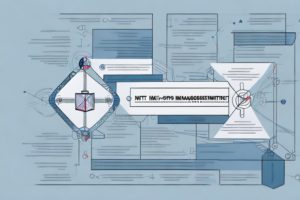What is security control allocation analysis strategy plan in RMF?

A security control allocation analysis strategy plan in the form of a flowchart or diagram
The Risk Management Framework (RMF) is a structured approach to managing risk in information technology systems and networks. One of the essential components of the RMF is security control allocation analysis strategy plan, which is critical in ensuring that information systems and networks are secure from potential threats and vulnerabilities. In this article, we’ll take a closer look at security control allocation analysis in RMF and understand how it is implemented, as well as its importance in modern-day cybersecurity.
Understanding the basics of RMF and security control allocation
Before diving into the specifics of security control allocation analysis, it’s essential to understand the basics of the Risk Management Framework (RMF). RMF is a structured process that organizations use to manage risks to their information technology (IT) and operational technology (OT) systems. It is based on six steps, which include:
- Categorizing the information system and the information processed, stored, and transmitted
- Selecting and implementing security controls
- Assessing security controls
- Authorizing the information system to operate
- Monitoring security controls
- Maintaining authorization
Security control allocation is a core element of RMF. It is the process of selecting the security controls, designing and incorporating them into the IT system or application, and ensuring that they are effective in maintaining the system’s security posture. In other words, it is the process of identifying the security controls needed to reduce risks to an acceptable level. It aims to ensure that the IT systems and applications protect the confidentiality, integrity, and availability of information.
Why is security control allocation analysis important in RMF?
Security control allocation analysis plays a critical role in the overall RMF process. It helps organizations identify the security controls required to protect their information systems and networks and ensure that the systems operate within an acceptable risk level. By conducting an analysis of security controls, organizations can decrease the likelihood of a security breach and the potential impact of such a breach.
Moreover, an effective security control allocation analysis enables organizations to assess the level of performance and efficiency of their security controls. It helps them identify whether the selected controls are adequate to protect the information system and whether additional or alternative controls may be required.
Exploring the different components of a security control allocation strategy plan
A security control allocation strategy plan is a comprehensive document that outlines how an organization plans to allocate security controls to manage risks to its information systems and networks. It defines the process for selecting and implementing security controls and ensures that they are effective in reducing risks to an acceptable level. The different components of a security control allocation strategy plan include:
- Identification of security requirements: This involves determining the security requirements specific to the information system or network and the sensitivity of the data that the system contains
- Selection of security controls: This involves selecting security controls that are appropriate for the information system or network and the identified security requirements
- Implementation of security controls: This involves incorporating selected security controls into the information system or network
- Assessment of security controls: This involves determining the effectiveness of the implemented security controls in addressing the identified risks and meeting the security requirements of the system
- Authorization to operate: This involves obtaining approval from the relevant authorities to operate the information system or network
- Continuous monitoring: This involves monitoring the effectiveness of the implemented security controls and making necessary changes or upgrades to maintain the required security posture
How to conduct a security control allocation analysis in RMF
Conducting a security control allocation analysis in RMF involves several steps. The following steps are necessary to ensure a successful security control allocation analysis:
- Identify the objectives and scope of the analysis
- Collect and document relevant information about the information system or network
- Identify the security requirements and risks to the information system or network
- Select appropriate security controls to mitigate identified risks
- Implement selected security controls
- Test and assess the effectiveness of the implemented security controls
- Authorise the information system or network to operate
- Monitor and review the system’s security posture
Best practices for developing an effective security control allocation strategy plan
Developing an effective security control allocation strategy plan is vital in ensuring the protection of an information system or network. Here are some best practices that organizations can follow when developing their security control allocation strategy plan:
- Involve stakeholders from different departments and levels within the organization
- Align the security control allocation strategy plan with the organization’s overall security objectives and goals
- Ensure that the security controls selected are appropriate for the information system or network and the identified risks
- Ensure that the security controls are cost-effective and within the organization’s budget
- Establish a testing and evaluation process to verify the effectiveness of the implemented security controls in reducing identified risks
- Maintain up-to-date documentation of the security control allocation strategy plan and periodically review and update it to reflect changes in the information system and network environment
Addressing common challenges in implementing a security control allocation analysis in RMF
Implementing a security control allocation analysis in RMF can be challenging, and organizations may face different issues. Some of the common challenges organizations encounter when implementing a security control allocation analysis plan include:
- Identifying the specific security requirements for their information systems or networks
- Selecting appropriate security controls that are effective in reducing the identified risks
- Ensuring that the selected security controls are compatible with the information system or network’s existing infrastructure
- Obtaining sufficient budget and resources to implement the selected security controls
- Integrating selected security controls into the organization’s culture or business model
To address these challenges, organizations should involve all stakeholders in the development of the security control allocation strategy plan. They should also establish clear objectives and prioritize the implementation of security controls based on risk level.
The role of automation tools in enhancing the accuracy and efficiency of security control allocation analysis
Automation tools can significantly aid in enhancing the accuracy and efficiency of security control allocation analysis. They help organizations manage risk more effectively and make informed decisions when selecting and implementing the appropriate security controls. Automation tools can:
- Automate the collection and analysis of data to identify risks and security requirements
- Provide recommendations for security controls that are appropriate for the information system or network
- Assist in the implementation and documentation of security controls
- Monitor and evaluate the effectiveness of the implemented security controls
Using automation tools can save organizations time and resources while improving the effectiveness of their security control allocation analysis in RMF.
Measuring the success of a security control allocation strategy plan: Key performance indicators to track
Measuring the success of a security control allocation strategy plan is essential in monitoring its effectiveness in managing risks to the information system or network. Here are some key performance indicators (KPIs) that organizations can track to measure the success of their security control allocation strategy plan:
- The number of identified risks before and after implementing the security control allocation strategy plan
- The percentage reduction in identified risks after implementing the security control allocation strategy plan
- The level of compliance with relevant security policies, standards, and regulations
- The number of security incidents before and after implementing the security control allocation strategy plan
- The severity and impact of security incidents after implementing the security control allocation strategy plan
Tracking these KPIs can help organizations determine the effectiveness of their security control allocation strategy plan in managing risks to their information systems and networks.
Case studies: Real-life examples of successful implementation of security control allocation analysis in RMF
To illustrate the practical application of security control allocation analysis in RMF, below are some real-life examples:
Example 1: The Federal Student Aid (FSA) Program implemented security control allocation analysis to secure the personally identifiable information (PII) of over 20 million borrowers. By conducting an analysis of the security controls required, FSA was able to identify and mitigate potential security threats to borrower information, ensuring that the information was secure from unauthorized access.
Example 2: The Department of Defense (DoD) implemented security control allocation analysis to secure its classified and unclassified information systems and networks. By using a systematic and structured approach to security control allocation analysis, DoD was able to identify and mitigate potential security threats, reducing the risk of unauthorized access to sensitive information.
Future trends and developments in the field of security control allocation analysis strategy plan in RMF
The field of security control allocation analysis in RMF is continually evolving, and new trends and developments are emerging. Some of the future trends and developments in this field include:
- The increasing role of artificial intelligence and machine learning in security control allocation analysis
- The increasing adoption of cloud-based security solutions
- The integration of security control allocation analysis with the larger risk management process
- The increasing emphasis on training and awareness to mitigate risks associated with human error
As these trends continue to develop, organizations must stay up to date with new developments and adapt their security control allocation strategy plans to meet new challenges.
Conclusion
Security control allocation analysis in RMF is an essential process that helps organizations manage risks to their information systems and networks. By selecting and incorporating appropriate security controls, organizations can significantly reduce their exposure to potential security threats. Implementing a security control allocation strategy plan that aligns with the organization’s risk management objectives is critical to ensuring an effective and efficient cybersecurity posture. Automation tools and KPIs are useful in enhancing the accuracy and effectiveness of security control allocation analysis while ensuring that organizations comply with relevant policies and regulations. As the field of security control allocation analysis continues to evolve, organizations must stay up to date with new developments and adapt their security control allocation strategy plan to meet new challenges.



